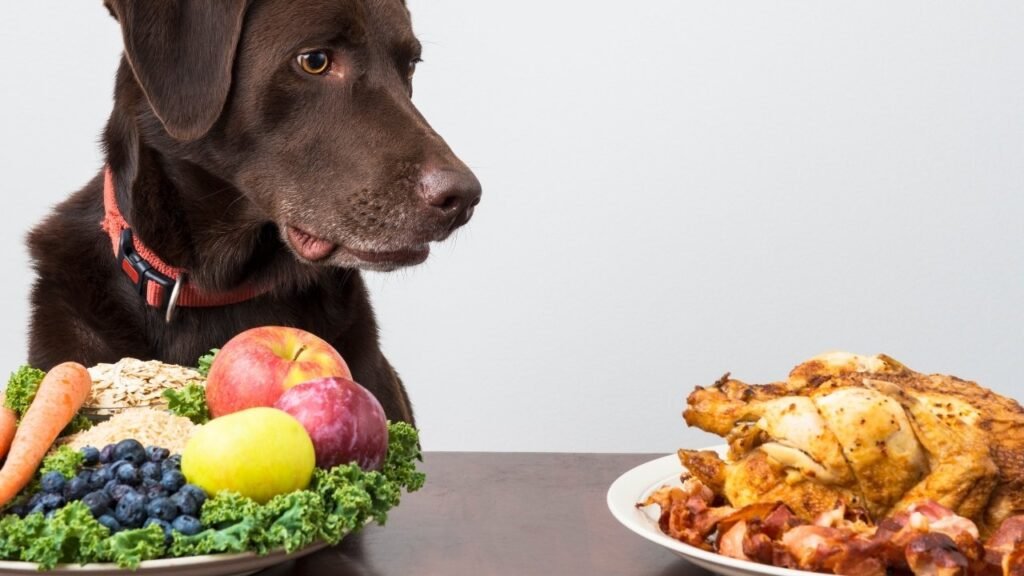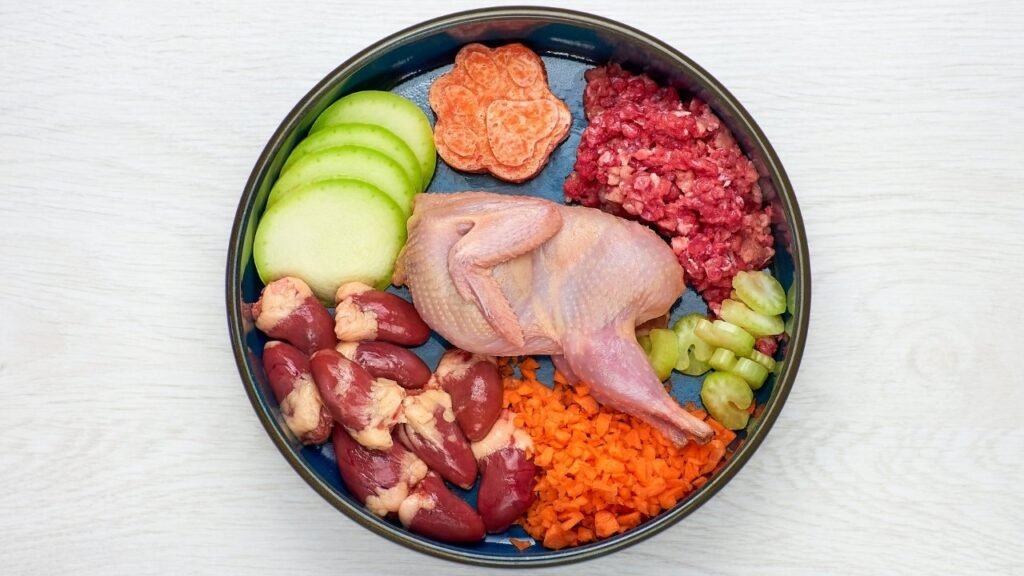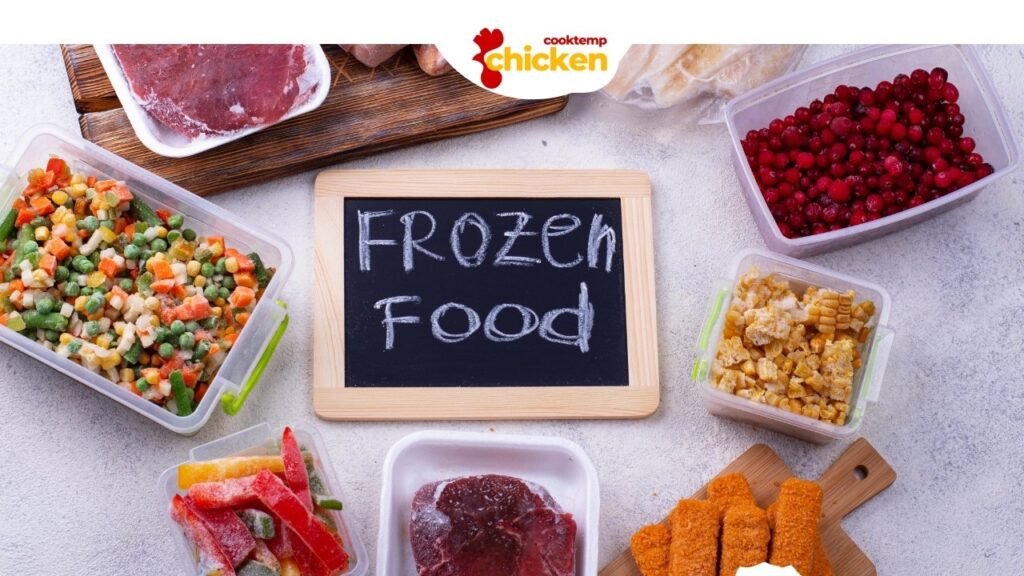Imagine preparing a fresh, nutritious meal for your furry friend every day without worrying about spoilage. How long does frozen raw dog food last is a common question among pet owners who prioritize their dog’s health and well-being. Whether you’re transitioning your pup to a raw diet or simply looking to stock up, understanding the shelf life of frozen raw dog food is crucial for maintaining its quality and safety. This comprehensive guide will walk you through everything you need to know to ensure your dog enjoys delicious and safe meals every time.
Why Choose Frozen Raw Dog Food?
Before diving into storage details, let’s explore why many pet owners opt for frozen raw dog food.
- Nutrient-Rich: Frozen raw diets retain more nutrients compared to processed kibble, providing your dog with essential vitamins and minerals.
- Improved Digestion: Raw food can be easier for dogs to digest, promoting better gut health.
- Enhanced Energy Levels: Many owners report increased energy and vitality in their dogs when switching to a raw diet.
- Customizable Diet: You have full control over the ingredients, ensuring your dog gets exactly what they need.
Ever wondered if frozen raw dog food is the right choice for your pet? The benefits speak for themselves, but proper storage is key to maximizing these advantages.
Understanding Frozen Raw Dog Food

Frozen raw dog food typically consists of uncooked meat, bones, organs, and sometimes vegetables or fruits. This diet mimics what dogs would eat in the wild, providing a balanced and natural meal.
Types of Frozen Raw Dog Food
- Pre-Packaged Meals: Convenient and often nutritionally balanced, these are ready to serve after thawing.
- Bulk Meat: Raw meats like chicken, beef, turkey, and lamb that you can portion and freeze at home.
- DIY Raw Diets: Customized blends where you select each ingredient based on your dog’s specific needs.
Factors Affecting Shelf Life
Understanding how long does frozen raw dog food last involves considering several factors:
1. Type of Meat
Different meats have varying shelf lives:
| Meat Type | Freezer Shelf Life |
|---|---|
| Chicken | 9 months |
| Beef | 12 months |
| Turkey | 9 months |
| Lamb | 12 months |
| Fish | 6 months |
2. Packaging Method
Proper packaging can significantly extend the shelf life of frozen raw dog food.
- Vacuum Sealing: Removes air, preventing freezer burn and extending freshness.
- Airtight Containers: Reduces exposure to moisture and air.
- Freezer Bags: Ensure they are thick and double-bagged for added protection.
3. Freezer Temperature
Maintaining a consistent freezer temperature is crucial.
- Optimal Temperature: -18°C (0°F) or lower.
- Fluctuations: Frequent opening of the freezer or power outages can affect the quality.
4. Quality of Ingredients
Fresh, high-quality ingredients last longer and provide better nutrition.
- Source: Choose reputable suppliers to ensure the meat is fresh before freezing.
- Handling: Proper handling before freezing minimizes contamination and spoilage.
Storage Guidelines for Frozen Raw Dog Food

To answer how long does frozen raw dog food last, follow these storage guidelines to ensure your dog’s meals remain safe and nutritious.
Freezer Storage Tips
- Label Everything: Include the date of freezing and the type of meat.
- Use Proper Packaging: Invest in vacuum sealers or high-quality freezer bags.
- Organize Your Freezer: Keep similar items together and rotate stock using the FIFO (First In, First Out) method.
- Avoid Overloading: Ensure air can circulate around packages for even freezing.
Thawing Frozen Raw Dog Food
Proper thawing is essential to maintain the quality and safety of the food.
- Refrigerator Thawing: The safest method. Allow 24 hours for a full thaw.
- Cold Water Thawing: Place the sealed package in cold water, changing the water every 30 minutes.
- Never Thaw at Room Temperature: This can promote bacterial growth and spoilage.
Signs of Spoilage
Even with careful storage, it’s essential to recognize when frozen raw dog food has gone bad.
- Off Smell: A sour or rancid odor indicates spoilage.
- Discoloration: Unusual colors or mold growth are red flags.
- Texture Changes: Slimy or sticky textures suggest bacterial activity.
- Freezer Burn: While not harmful, freezer burn can degrade the quality and taste.
Rhetorical Question: How can you ensure your dog’s food is always fresh and safe? Regularly checking for these signs is crucial in maintaining your pet’s health.
Tips to Extend the Shelf Life
Want to maximize the longevity of your frozen raw dog food? Here are some expert tips:
- Invest in a Good Freezer: Ensure your freezer maintains a consistent temperature of -18°C (0°F) or lower.
- Use Quality Packaging: Vacuum sealing or using high-quality freezer bags prevents air exposure.
- Limit Freezer Access: Reduce the number of times the freezer is opened to maintain a stable temperature.
- Divide into Portions: Freezing food in meal-sized portions reduces the need to refreeze and minimizes waste.
- Avoid Cross-Contamination: Keep raw dog food separate from other foods in the freezer.
Common Mistakes to Avoid
Even with the best intentions, certain mistakes can shorten the shelf life of frozen raw dog food.
- Improper Packaging: Using flimsy bags or not sealing properly leads to freezer burn.
- Overcrowding the Freezer: Blocks air circulation, causing uneven freezing and potential spoilage.
- Thawing Incorrectly: Thawing at room temperature can make the food unsafe.
- Ignoring Labels: Forgetting to rotate stock can result in older food being used first, increasing the risk of spoilage.
- Inadequate Portioning: Not portioning properly can lead to frequent thawing and refreezing, degrading the quality.
Portioning Frozen Raw Dog Food
To help you manage your frozen raw dog food effectively, here’s a table outlining portion sizes based on your dog’s weight.
| Dog Weight | Daily Portion | Freezer Bag Size | Number of Portions per Bag |
|---|---|---|---|
| Up to 20 lbs | 1/2 cup | 1-pound bag | 4 portions |
| 21-50 lbs | 3/4 cup | 2-pound bag | 2-3 portions |
| 51-80 lbs | 1 cup | 3-pound bag | 3 portions |
| 81 lbs and above | 1 1/2 cups | 4-pound bag | 2 portions |
Personal Opinion: I find that using labeled freezer bags with clear portion sizes not only keeps things organized but also makes meal prep a breeze. It ensures that you’re always serving the right amount, reducing waste and maintaining your dog’s diet consistency.
FAQs About How Long Does Frozen Raw Dog Food Last
1. How Long Can I Keep Frozen Raw Dog Food in the Freezer?
Frozen raw dog food can last anywhere from 6 months to a year depending on the type of meat and packaging. Generally, leaner meats like beef and lamb last longer, while fish should be used within six months.
2. Can I Refreeze Thawed Raw Dog Food?
It’s not recommended to refreeze raw dog food once it has been thawed. Refreezing can degrade the quality and increase the risk of bacterial growth. Always thaw only what you need.
3. Does Freezing Kill Bacteria in Raw Dog Food?
Freezing does not kill bacteria; it only inhibits their growth. Proper handling and storage are essential to prevent bacterial contamination.
4. What Are the Best Packaging Materials for Freezing Raw Dog Food?
Vacuum-sealed bags are the best as they remove air and prevent freezer burn. If vacuum sealing isn’t an option, use high-quality, thick freezer bags and remove as much air as possible.
5. How Should I Thaw Frozen Raw Dog Food Safely?
The safest methods are:
- Refrigerator Thawing: Takes about 24 hours.
- Cold Water Thawing: Change water every 30 minutes until thawed.
6. Can I Freeze Raw Dog Food with Bones?
Yes, but ensure the bones are appropriate for freezing. Some bones can become brittle and dangerous when frozen and thawed. Consult your vet for safe bone options.
7. How Can I Tell if Frozen Raw Dog Food Has Gone Bad?
Look for off smells, discoloration, slimy textures, or freezer burn. If in doubt, it’s safer to discard the food to prevent any health risks to your dog.
8. Is It Okay to Freeze Homemade Raw Dog Food?
Absolutely! Freezing homemade raw dog food can help maintain freshness and extend shelf life. Just ensure it’s stored properly using airtight packaging.
9. Do Different Meats Have Different Freezer Lifespans?
Yes, beef and lamb typically last up to a year, chicken and turkey around 9 months, and fish about 6 months.
10. Can I Add Vegetables to Frozen Raw Dog Food?
Yes, adding vegetables like carrots, spinach, and sweet potatoes can provide additional nutrients. Ensure they are finely chopped or pureed for easier digestion.
Personal Touch: My Journey with Frozen Raw Dog Food
Switching my dog, Max, to a raw diet was a game-changer. Initially, I was overwhelmed by the logistics, especially how long does frozen raw dog food last and how to store it properly. After some trial and error, I discovered that investing in a good vacuum sealer and organizing my freezer with labeled portions made the process seamless.
Why I Love Frozen Raw Dog Food:
- Convenience: Pre-portioning meals saves time during busy weekdays.
- Health Benefits: Max has more energy, shinier fur, and better overall health.
- Variety: I can mix different meats and vegetables, keeping Max’s meals exciting and balanced.
One tip I can’t stress enough is to never overlook the importance of proper thawing. Thawing in the refrigerator is worth the wait and ensures that the food remains safe and fresh. Watching Max enjoy his meals with satisfaction makes all the effort worthwhile.
Conclusion
Understanding how long does frozen raw dog food last is essential for any pet owner committed to providing their dog with a healthy, nutritious diet. By following proper storage guidelines, using the right packaging methods, and being mindful of thawing practices, you can ensure that your dog enjoys fresh and safe meals every time.
Ever felt uncertain about managing frozen raw dog food? With the tips and information provided in this guide, you’ll navigate the storage and preparation process with confidence. Remember, a well-fed dog is a happy dog, and investing time in proper food management pays off in the long run.
So, grab those freezer bags, get organized, and embark on a rewarding journey of feeding your dog the best nature has to offer. Your furry friend will thank you with wagging tails and endless affection!
Happy feeding!



1 Comment
This guide is packed with helpful tips! Proper storage and thawing are so important for keeping our furry friends’ meals safe and nutritious. Love the emphasis on nutrient retention in raw diets—our dogs deserve the best!